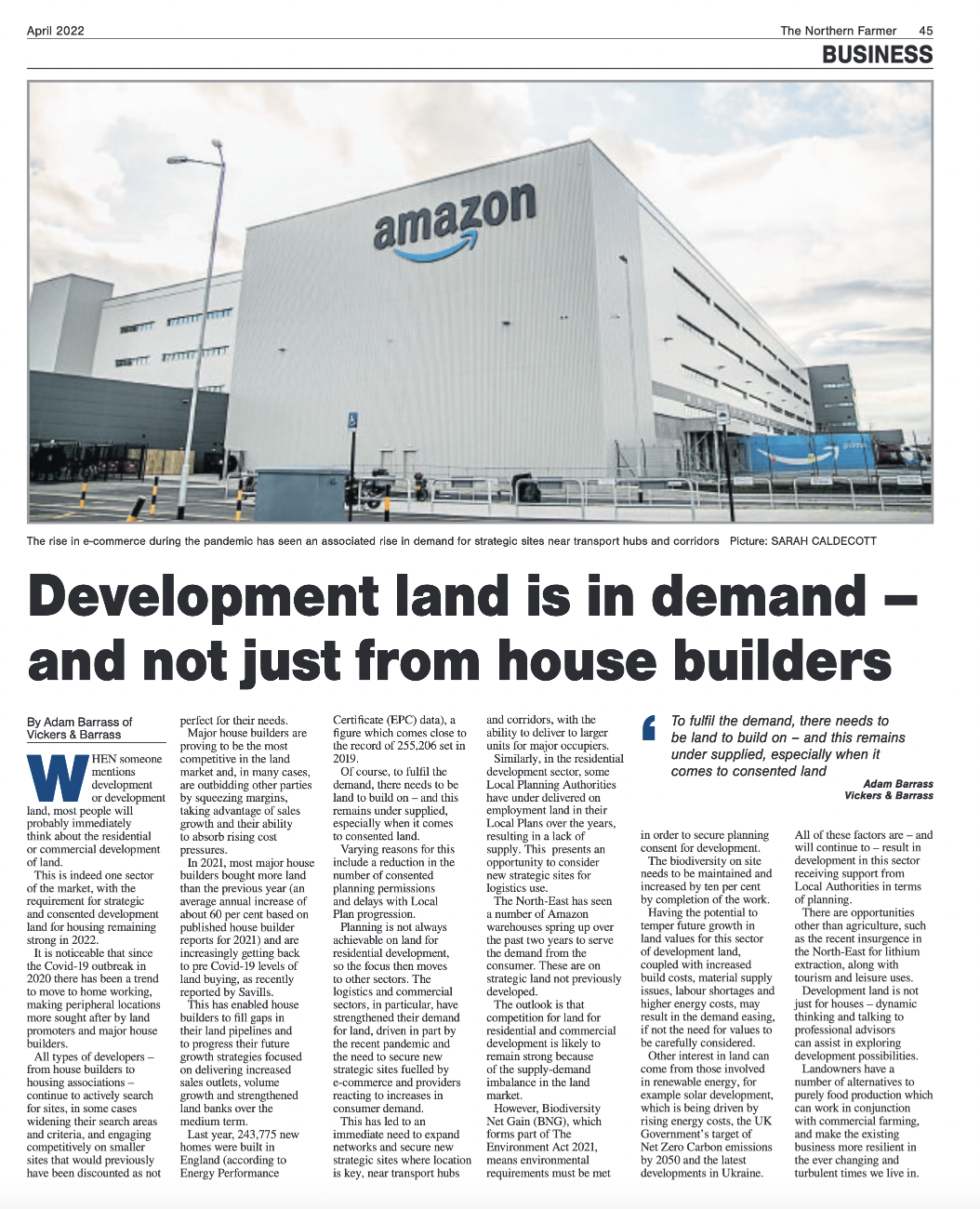Development “the process of converting land to a new purpose by constructing buildings or making use of its resources”
When someone mentions development or development land most people will likely think residential or commercial development of land. This is indeed one sector of the market, with the requirement for strategic and consented development land for housing remaining strong in 2022. It is noticeable that since the COVID-19 outbreak in 2020 there has been a trend to move to home-working, making peripheral locations more sought after by land promotors and major house builders.
All types of developers from house builders to housing associations continue to actively search for sites, in some cases, widening their search patches and criteria, now engaging competitively on smaller sites previously discounted.
Major house builders are proving to be the most competitive in the land market and, in many cases, are outbidding other parties by squeezing margins, taking a view on sales growth and their ability to absorb rising cost pressures.
In 2021, most major house builders bought more land than the previous year (an average annual increase of c.60% based on published house-builder reports for 2021) and are increasingly getting back to pre Covid-19 levels of land buying as recently reported by Savills.
This has enabled house-builders to fill gaps in their land pipelines and to progress their future growth strategies focused on delivering increased numbers of sales outlets, volume growth and strengthened land banks over the medium term.
Which is required when 243,775 new homes were built in England in 2021 (according to Energy Performance Certificate (EPC) data) getting close to the record of 255,206 set in 2019, of course to fulfil the demand there needs to be land supply which remains undersupplied especially of consented land. Varying reasons for this include a reduction in the number of consented planning permissions and delays with Local Plan progression.
Planning is not always achievable on land in question for residential development, the shift then moves to other sectors, with the logistics and commercial sector seeing strengthened demand, driven in part from the recent pandemic, to secure new strategic sites fuelled by e-commerce and providers reacting to increases in consumer demand, leading to immediate need to expand networks and secure new strategic sites, where location is key near transport hubs and corridors to distribute with the ability to deliver to larger units for the major occupiers. Similarly, to the residential development sector, some Local Planning Authorities have underdelivered on employment land in their Local Plans over the years, resulting in lack of supply, presenting an opportunity to consider new strategic sites for a logistic use. The North East has certainly seen a number of Amazon warehouses spring up over the last two years to serve the demand from the consumer on strategic land not previously developed.
To read Adam’s full article, as published first in The Northern Farmer magazine please click here





